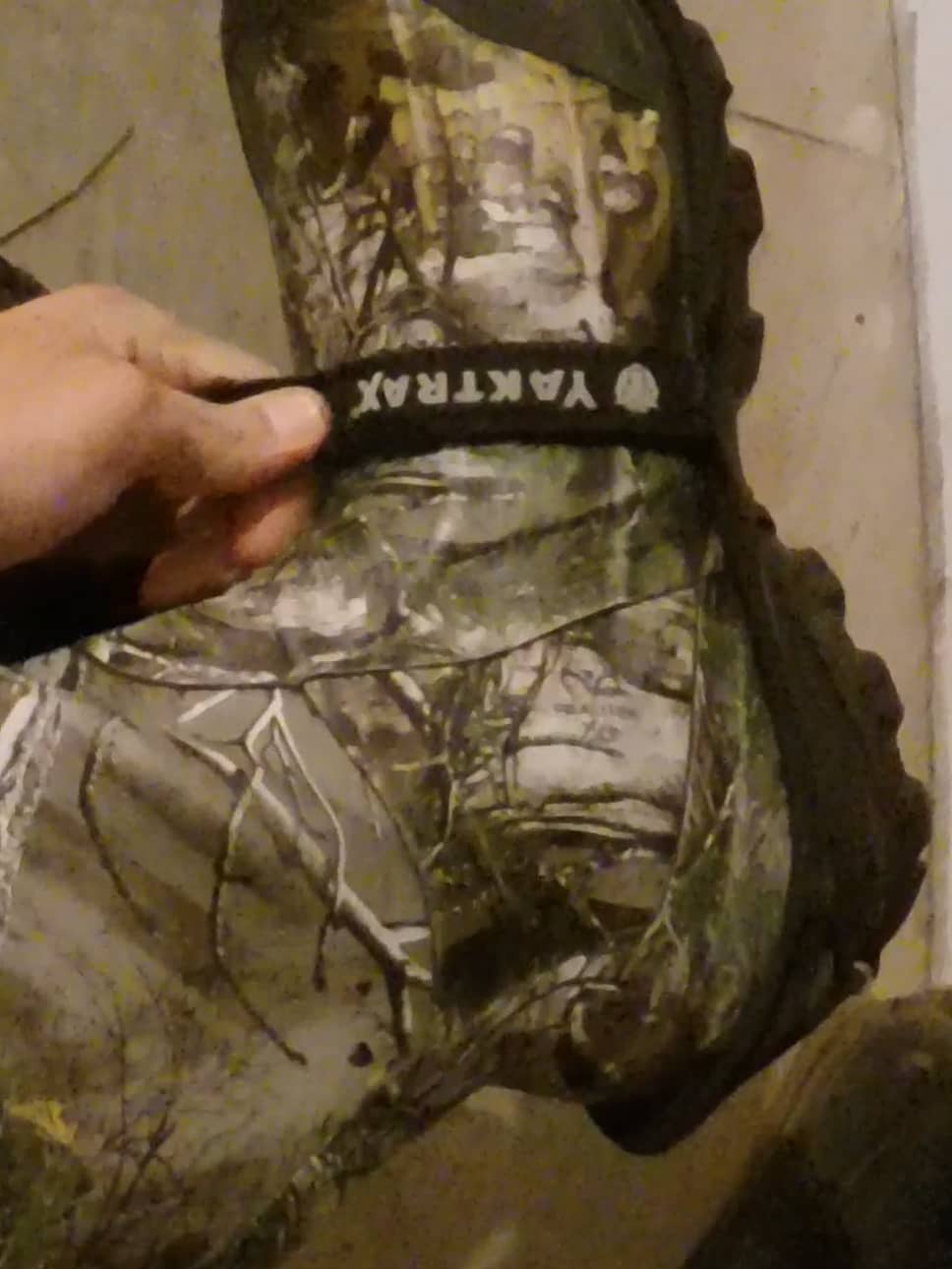
Making sure a new set of ice cleats is properly placed and secured on a boot ensures a safe step when the season’s first ice is smooth and slick and all winter long. Simonson Photo
By Nick Simonson
I remember the early morning mental image as clear as the ringing in my head that followed. Walking over to pick up the auger from the last in my line of ice holes, I was suddenly staring at my boots pointing skyward and felt the impact along my shoulders and the back of my head against the hard surface of the frozen lake. The flash in my field of vision that followed with the pain and dizziness suggested a concussion, and the rest of the day on the ice was a blur. Young and invincible I waived off a return home to rest and kept on fishing for the trout and perch below the frozen surface of the lake. The pictures of a couple nice rainbows served in place of my foggy memory, but the incident acted as a solid reminder about ice safety.
Far more often than a car falling in, or an angler breaking through the ice, slips on the frozen surface of a lake result in season-ending injuries and trips to the emergency room for broken bones, concussions, and other disastrous results. Especially now, as ice begins to form clear and smooth, or is polished to a shine by gusty winds blowing snow across its surface, things are at their slickest and when drifts aren’t present, getting from hole to hole or making that sprint for the flag on a tip-up can be a challenge and downright dangerous without the proper foot gear. Thus, the relatively inexpensive investment in a set of ice cleats is a wise one that helps ensure safe travel by foot on the ice.
Three primary types of cleats give ice anglers a variety to choose from. Over-the-foot metal angle cleats fill the gap on winter boots between the toe and the heel, placing the points at the mid-foot to provide security on ice. Typically the cheapest, they fill the void when nothing else is available. The next step up is a set of rubber pull-overs with small metal pegs that lock into the ice with the downward pressure of each step. A larger rubber sole, often with ribbing to help add grip provides a secure base for the six-to-ten metal tabs that lock into the ice to prevent slipping.
Finally, a rubber framework that is stretched around a boot and holds multiple metal coils provides a lightweight frame but also secure traction with each step as the coils cut into the surface. This option needs some review from time to time, as the rubber often stretches and breaks, but typically the pair will last the winter and need replacement by the time the ice season ends.
Before each ice outing, check to make sure a cleat is secure around each boot, regardless of type. Inspect each strap or rubber cord that holds the cleat in place for any wear, and check for the loss of traction or the blunting or even removal of the metal pieces on each cleat. There’s nothing worse than stepping on the ice and realizing a cleat isn’t there, or simply isn’t doing its job anymore, and things get a bit more slippery. Just remember to remove functional cleats before setting foot on smooth surfaces that are not ice, as they may cause slips on wood or tile floors, or the smooth cement of a garage.
This ice season, consider an investment in new cleats to keep each winter adventure safe. Beyond the bumps and bruises that can happen with a fall on the ice, worse impacts such as broken bones or a concussion can bring a trip – and an ice fishing season – to an untimely end. Prevent those incidents with a small down payment on safe travel and make every step count whether it’s walking from hole-to-hole with a rod and sonar in hand to check for active fish or that frenzied sprint after a springing flag on a tip-up for hands-on combat with a running northern pike. A new set of cleats should be as important as sharp auger blades and shiny new jigging spoons this season.
